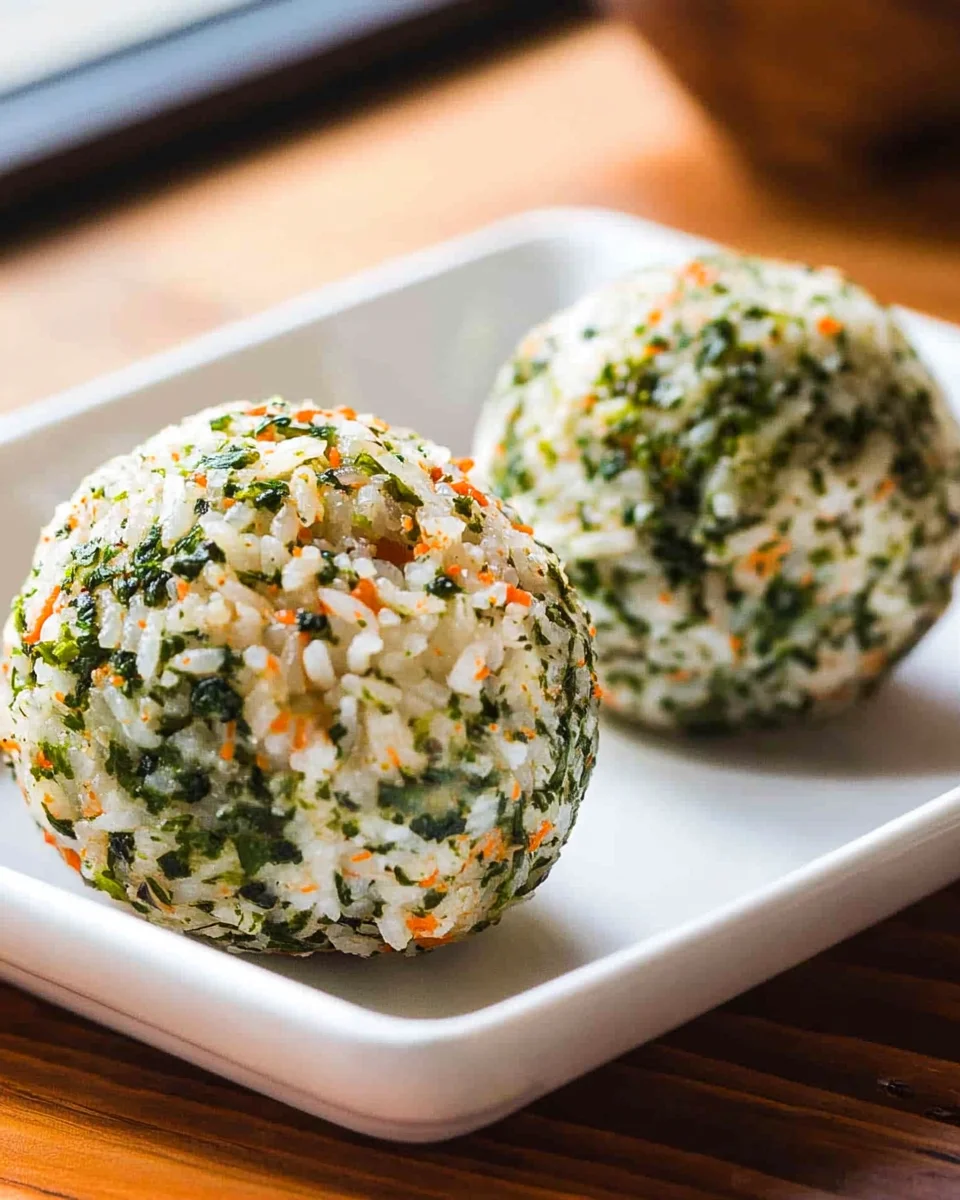Korean rice balls, known as Jumeokbap (주먹밥), are a beloved dish that embodies the simplicity and versatility of Korean cuisine. The name translates to “fist rice,” referring to the way they are shaped—pressed together like a fist to form compact, flavorful balls. These rice balls are a staple in Korean lunchboxes, picnics, and quick meals, offering endless possibilities for customization. Whether stuffed with seasoned tuna, bulgogi, or vegetables, Jumeokbap is a satisfying, easy-to-make dish that can be adapted to suit any preference.
In this article, we’ll explore the origins of Jumeokbap, its significance in Korean cuisine, popular variations, serving ideas, and answers to frequently asked questions.
A Glimpse Into History: The Origins of Jumeokbap
Jumeokbap has a humble yet fascinating history. It dates back centuries when rice was a dietary staple, and people needed a convenient, portable meal that didn’t require utensils. Traditionally, Jumeokbap was a simple combination of rice and salt, meant to provide sustenance for workers, soldiers, and travelers.
During the Korean War (1950–1953), rice balls became an essential survival food for soldiers and refugees, as they were easy to carry and didn’t require refrigeration. Over time, people began adding ingredients like sesame oil, roasted seaweed, and side dishes to enhance the flavor. Today, Jumeokbap is not just a survival food but a beloved snack enjoyed by all generations.
Why Jumeokbap is a Must-Try Dish
1. Quick and Easy to Prepare
Jumeokbap is perfect for those who want a delicious meal without spending too much time in the kitchen. With just a few ingredients, you can make a batch in under 15 minutes.
2. Versatile and Customizable
From traditional flavors to modern twists, Jumeokbap can be filled with almost anything—meat, seafood, vegetables, or even cheese. This adaptability makes it an excellent meal for different taste preferences and dietary needs.
3. Portable and Mess-Free
Unlike many other rice dishes that require chopsticks or spoons, Jumeokbap is a handheld meal—no utensils needed. This makes it a perfect grab-and-go option for lunchboxes, road trips, or office snacks.
4. A Healthy and Balanced Option
With the right mix of carbohydrates, protein, and healthy fats, Jumeokbap can be a nutritious and filling meal. It provides long-lasting energy, making it a great choice for students, athletes, or anyone needing a quick boost.
5. A Fun Cooking Experience
Making Jumeokbap is a fun and interactive experience, especially for families. Kids love shaping the rice balls, and it’s a great way to introduce them to cooking.
Gather Your Ingredients – The Heart of the Dish
Base Ingredients:
- 2 cups cooked short-grain rice (warm and slightly sticky)
- 1 teaspoon sesame oil
- ¼ teaspoon salt
- 1 teaspoon sesame seeds
Optional Mix-Ins & Fillings:
- Tuna Mayo Filling:
- 1 can tuna (drained)
- 2 tablespoons mayonnaise
- ½ teaspoon soy sauce
- Bulgogi Beef Filling:
- ½ cup cooked bulgogi (finely chopped)
- Vegetarian Option:
- 2 tablespoons chopped kimchi
- 1 tablespoon finely diced carrots
- 1 tablespoon finely diced green onions
Coating & Garnish:
- Crushed roasted seaweed (gim)
- Extra sesame seeds
Step-by-Step Magic – Crafting the Perfect Jumeokbap
Step 1: Prep the Rice
- Cook short-grain rice and let it cool slightly until warm.
- Mix in sesame oil, salt, and sesame seeds for a lightly seasoned base.
Step 2: Prepare the Fillings
- If using tuna mayo, mix tuna, mayonnaise, and soy sauce together.
- If using bulgogi, finely chop the cooked meat.
- For a vegetarian version, mix chopped kimchi, carrots, and green onions.
Step 3: Assemble the Rice Balls
- Take a small amount of rice (about 2 tablespoons) and flatten it in your palm.
- Add a teaspoon of filling in the center.
- Gently shape the rice around the filling and roll it into a compact ball.
Step 4: Coat & Garnish
- Roll the rice balls in crushed roasted seaweed for extra flavor.
- Sprinkle with sesame seeds for a final touch.
The Nutrition Breakdown – Fuel for the Day
(Note: Values may vary depending on filling choices.)
Per Rice Ball (without filling):
- Calories: ~90
- Carbohydrates: ~18g
- Protein: ~2g
- Fat: ~2g
Adding protein-based fillings like tuna or bulgogi will increase protein content.
Enjoy & Customize!
Korean rice balls are a versatile and fun snack—perfect for lunchboxes, picnics, or quick meals. Get creative with fillings and toppings! Would you like suggestions for variations or serving ideas?
Popular Variations of Jumeokbap
While traditional Jumeokbap consists of simple seasoned rice, modern versions incorporate a variety of fillings and coatings. Here are some of the most popular variations:
1. Classic Seaweed Rice Balls
- The most traditional version, featuring seasoned rice rolled in crushed roasted seaweed (gim) and sprinkled with sesame seeds. Simple yet delicious.
2. Tuna Mayo Jumeokbap
- One of the most popular fillings, combining canned tuna, mayonnaise, and soy sauce for a creamy and savory taste.
3. Bulgogi Rice Balls
- Perfect for meat lovers, this version includes chopped bulgogi (Korean marinated beef), adding a rich, smoky flavor to the rice.
4. Kimchi Jumeokbap
- A spicier option that incorporates chopped kimchi for a tangy and slightly fermented taste, often balanced with sesame oil.
5. Spicy Gochujang Rice Balls
- Features gochujang (Korean red pepper paste) mixed with rice, adding a bold and fiery flavor, often paired with cooked vegetables.
6. Cheese-Stuffed Jumeokbap
- A modern twist, where a cube of melty cheese is placed inside the rice ball, offering a creamy surprise in every bite.
7. Vegetarian and Vegan Options
- Using plant-based fillings like avocado, mushrooms, or tofu makes Jumeokbap a great option for vegetarians and vegans.
Best Ways to Serve and Enjoy Jumeokbap
Pair with Korean Side Dishes
Jumeokbap pairs wonderfully with traditional banchan (Korean side dishes) like:
- Kimchi – Fermented cabbage or radish for a spicy, tangy contrast.
- Pickled Radish (Danmuji) – A sweet and crunchy side that refreshes the palate.
- Japchae (Glass Noodles) – A slightly sweet stir-fried noodle dish that complements the rice.
As a Lunchbox Staple
Jumeokbap is a great addition to dosirak (Korean lunchboxes). Pack them alongside some fresh fruits, boiled eggs, and a small portion of kimchi for a balanced meal.
Dipping Sauces for Extra Flavor
For added flavor, try dipping Jumeokbap in:
- Soy sauce mixed with sesame oil and chili flakes
- Ssamjang (spicy Korean dipping sauce)
- Gochujang-based sauce
Perfect for Picnics and Gatherings
Since Jumeokbap can be made in advance and eaten cold, it’s an excellent choice for picnics, road trips, or casual get-togethers.
FAQs About Jumeokbap
1. What is the difference between Jumeokbap and Onigiri?
Jumeokbap is the Korean version of rice balls, typically seasoned with sesame oil and crushed seaweed. Onigiri, the Japanese counterpart, often uses plain rice with a nori (seaweed) wrap and is sometimes shaped into triangles.
2. Can I use regular rice instead of short-grain rice?
Short-grain rice is recommended because of its sticky texture, which helps the rice balls hold their shape. If you use long-grain rice, you may need to add a bit of extra moisture to help it stick together.
3. How do I store leftover Jumeokbap?
Store them in an airtight container in the refrigerator for up to 24 hours. To reheat, microwave for 20–30 seconds, lightly covered with a damp paper towel to prevent drying out.
4. Can Jumeokbap be made in advance?
Yes! You can prepare Jumeokbap a few hours ahead of time and store them at room temperature for up to 4 hours or in the fridge if keeping them longer.
5. How do I keep Jumeokbap from sticking to my hands?
Lightly wet or oil your hands with sesame oil before shaping the rice balls. This prevents sticking and adds a subtle nutty aroma.
6. Can I make Jumeokbap without fillings?
Absolutely! Simple seasoned rice balls with sesame oil, salt, and crushed seaweed taste amazing on their own.
Conclusion: A Timeless Dish for Every Occasion
Jumeokbap is more than just a rice ball—it’s a symbol of Korean culinary ingenuity. From its wartime origins to its place in modern Korean cuisine, it has stood the test of time as a delicious, portable, and endlessly customizable meal. Whether you’re looking for a quick snack, a nutritious lunchbox item, or a fun meal to make with family, Jumeokbap is the perfect choice.
So next time you have leftover rice, why not turn it into something special? With just a few ingredients, you can create your own version of this classic Korean comfort food. Happy cooking!

Korean Rice Balls (Jumeokbap): A Delicious and Customizable Snack
- Total Time: 25 minutes
- Yield: 8-10 rice balls
Description
Jumeokbap, meaning “fist rice,” is a simple yet delicious Korean rice ball dish. These flavorful bites are easy to make, customizable, and perfect for lunchboxes, snacks, or picnics. With various fillings like tuna mayo, bulgogi, and kimchi, you can mix and match to create your ideal rice ball!
Ingredients
Base Ingredients:
- 2 cups cooked short-grain rice (warm and slightly sticky)
- 1 teaspoon sesame oil
- ¼ teaspoon salt
- 1 teaspoon sesame seeds
Optional Mix-Ins & Fillings:
- Tuna Mayo Filling: 1 can tuna (drained), 2 tablespoons mayonnaise, ½ teaspoon soy sauce
- Bulgogi Beef Filling: ½ cup cooked bulgogi (finely chopped)
- Vegetarian Option: 2 tablespoons chopped kimchi, 1 tablespoon finely diced carrots, 1 tablespoon finely diced green onions
Coating & Garnish:
- Crushed roasted seaweed (gim)
- Extra sesame seeds
Instructions
Step 1: Prep the Rice
- Cook short-grain rice and let it cool slightly until warm.
- Mix in sesame oil, salt, and sesame seeds for a lightly seasoned base.
Step 2: Prepare the Fillings
- If using tuna mayo, mix tuna, mayonnaise, and soy sauce together.
- If using bulgogi, finely chop the cooked meat.
- For a vegetarian version, mix chopped kimchi, carrots, and green onions.
Step 3: Assemble the Rice Balls
- Take a small amount of rice (about 2 tablespoons) and flatten it in your palm.
- Add a teaspoon of filling in the center.
- Gently shape the rice around the filling and roll it into a compact ball.
Step 4: Coat & Garnish
- Roll the rice balls in crushed roasted seaweed for extra flavor.
- Sprinkle with sesame seeds for a final touch.
Notes
- Wet your hands slightly with water or sesame oil to prevent rice from sticking.
- Feel free to experiment with other fillings like spicy tuna, avocado, or cheese.
- Store in an airtight container for up to a day for best freshness.
- Prep Time: 15 minutes
- Cook Time: 10 minutes
- Category: Snack, Lunch
- Method: No-cook
- Cuisine: Korean





